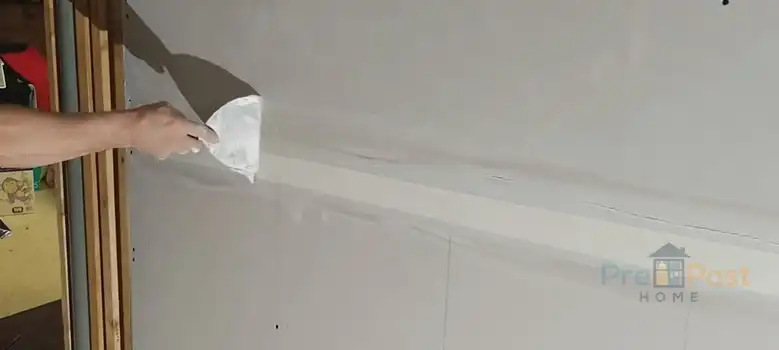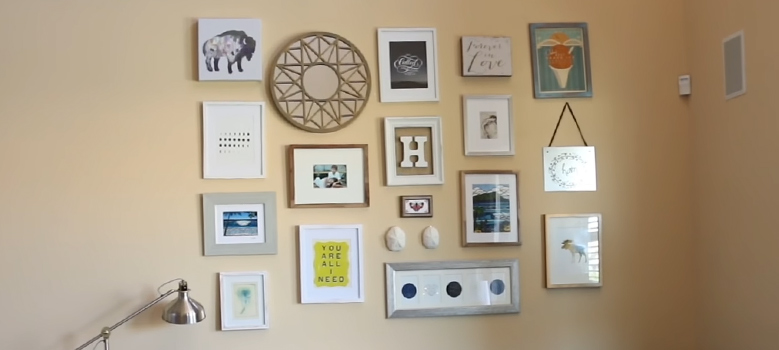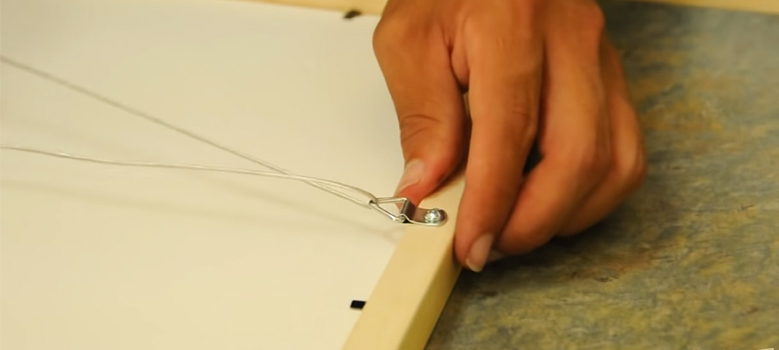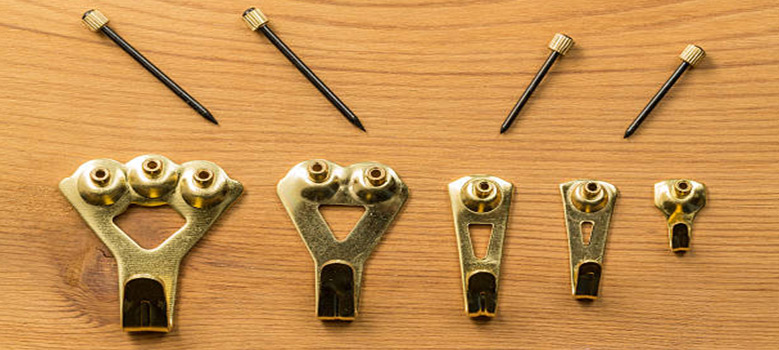The most common material used for building walls is concrete, which is hard and dense. As a result of removing the forms, the seams and imperfections of the records show through on the walls. You can either use it as part of the wall’s appeal, as in board-formed concrete, or fix it as an eyesore. You’re in luck if you’d like to smooth out some areas of your concrete walls. With a concrete grinder, a concrete surface grinder, a diamond grit sanding pad, and either a belt sander or rotating sander, you can sand concrete walls smoothly.
It takes several steps to a concrete wall smoothly. The first step is to grind down any large chunks of concrete left by the forms. A diamond grit masonry blade and a small angle grinder are the tools I use. Use the edge to cut and grind down protruding chunks and pieces of concrete. Grinding concrete creates dust, and concrete bits fly everywhere, so wear a mask and goggles.
Step-by-Step Procedure to Smooth Concrete Walls
When the concrete wall is flat and free of protruding chunks, sand it. Using a concrete surface grinder, smooth out the surface. Rub the surface with rough grit sandpaper with a belt sander or rotating sander. To reduce dust and heat, wet the wall. Sandpaper with a finer grit will give you a smoother finish as you progress. You can sand a concrete wall very soft and smooth if you put in enough effort and time. We’ll show you how to smooth concrete walls in detail, step-by-step.
Things You Will Need
- Painter’s tape
- Rough-grit sandpaper
- Dish soap
- Rags
- Concrete bonding agent
- Concrete
- Paint
- Power washer or vacuum
- Bucket
- Tarps or floor coverings
- Scrub brush
- Short-napped paint roller
- Straight trowel
The best methods for smoothing a concrete wall finish are imperative if you apply concrete to a wall. The problem is especially severe if you don’t correctly finish the concrete walls in your home. The surface of a cement finish wall is unattractive and unpleasant when misapplied while wet.
Step 1
It uses rough-grit sandpaper sand in any horrible concrete areas. Don’t try to level the wall. Roughen any areas where the new concrete might not adhere properly, and remove glaring lumps and bumps that would show through.
Step 2
Apply a liquid concrete bonding agent in pretty straight lines over a paint roller with a short nap over the wall’s surface. Don’t forget to cover the whole wall. Wait about five minutes for the product to firm up and become sticky.
Step 3
With a straight trowel, trowel a 3/8-inch layer of concrete over the wall. Smooth the concrete surface with the flat side of the scoop. Dry the concrete for about 30 minutes until most moisture evaporates.
Step 4
Spread a second layer of concrete about 12 inches thick over the entire wall. Smooth the concrete again by making straight lines with the trowel (in the opposite direction, if possible); smooth out any raised areas. Three to five days is enough time for the concrete to cure completely.
Prepare the Wall for Refinishing
Use painter’s tape to mark rough areas on the wall after meticulously inspecting it. Once you’ve identified them, use rough-grit sandpaper to smooth them. There’s no need to make sure they’re perfectly smooth, but they should be flush with the surrounding wall. The next step is to wash the wall to remove any dirt or debris. Using a power washer for interior concrete wall finishes might not be possible. Therefore, vacuum the walls using the soft brush attachment if you cannot use a power washer.
Put down tarps or other covers to protect the floor, and fill a bucket with warm water and dish soap. Wipe down the walls with a lint-free rag. After that, scrub them with a scrub brush dipped in soapy water. After wiping them again with a clean rag and plain water, let them dry completely. As a precaution, follow the manufacturer’s instructions on preparing your concrete finish.
Finish the Wall by Refinishing
Apply concrete bonding agent evenly to the walls with a short-napped paint roller. After the concrete has set for about five minutes, apply a 3/8-inch layer to the walls with a straight trowel. Using the scoop to smooth out lumps and bumps, ensure you rub the concrete in consecutive lines. Apply a second layer of concrete about 1/2 inch thick after the first layer has dried for at least 30 minutes. Move in the opposite direction, this time when creating straight lines.
After applying the second layer, inspect the entire wall to check for uneven spots. Before the concrete sets, you should fix any areas that you notice. It may take up to five days for the concrete to dry completely.
Surface Paint for Cement Walls
Once your concrete is smooth and dry, you can paint it if you choose to give it a more finished look. The best type of paint for concrete is masonry paint, sometimes called elastomeric paint. Latex paint will also work on concrete walls. If you want to hang pictures or other items on concrete, you can drill holes into it using a hammer drill and an appropriately sized drill bit. Because concrete is so strong, it should hold whatever you hang.
A concrete wall requires little maintenance and is durable, which makes it an excellent choice for industrial buildings, college dorms, and other buildings requiring little care. Concrete emphasizes that concrete walls are cost-effective, resilient, and energy-efficient. If you decide to go with concrete walls for your home, remember to fix any uneven spots, as it’s a relatively quick and easy process.
Frequently Asked Questions
Is it Possible to Smooth Rough Concrete?
If you use an orbital sander, you can typically sand them smooth enough, but the grit you use will determine the outcome. An uneven edge may require a concrete grinder. Using 40 to 60 grit may be sufficient for smoothing out mildly rough concrete.
Can You Sand Concrete Walls?
You can sand them to smooth out and polish concrete walls. For a large surface area, use a concrete surface grinder. To remove minor imperfections, you can also sand by hand.
How Can I Make My Concrete Walls look Better?
Adding stucco to concrete walls will give them a textured appearance and make them more beautiful. Use the correct adhesive to attach small slabs of flat, natural stone to the top of the wall if desired.
Conclusion
If you know how to do it, smoothing concrete after it dries is not tricky. Depending on your project and concrete situation, a few different options are available. It is sometimes possible to grind the surface enough with a sander or grinder. Resurfacing or adding a thicker layer of concrete may be necessary at other times. Before beginning any concrete project, ensure that you have the required tools and processes.





